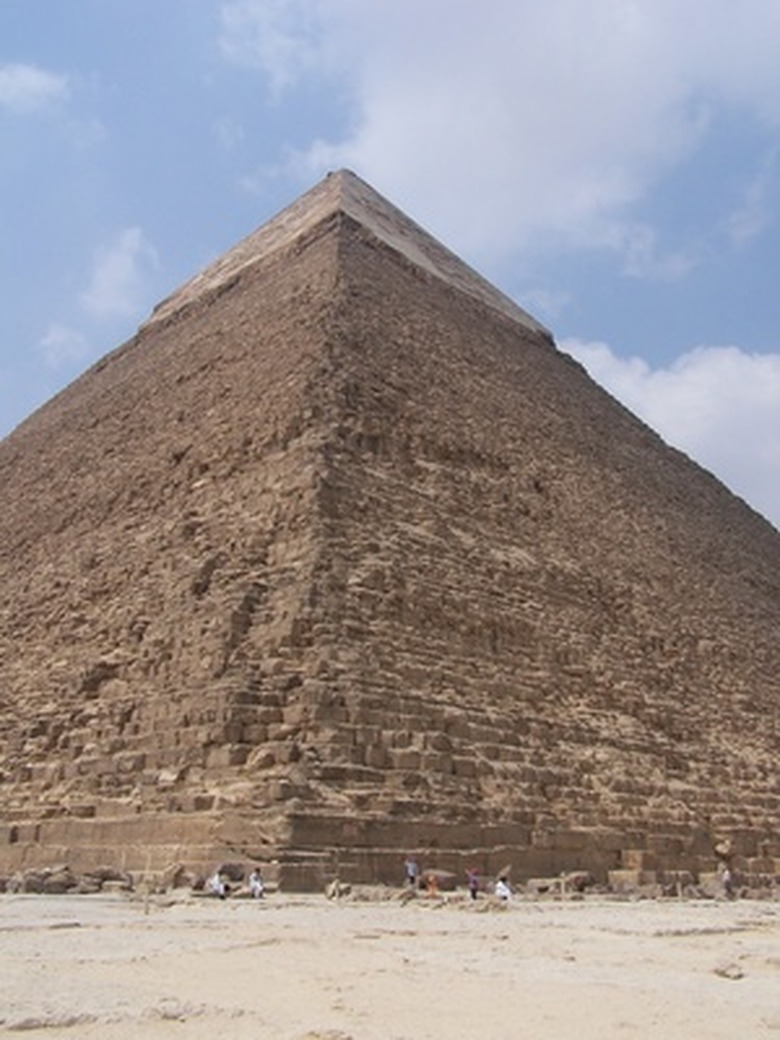Fun Middle School Math Projects
Getting students to have fun while learning math can be a challenge. Oftentimes math is a subject that students fear and dislike, which is complicated by the fact that many students have low self-confidence concerning the topic. "I can't do math" is a common phrase heard in middle schools throughout the country. Fortunately, over the years, educators have created math projects for middle school students that are both educational and engaging.
Calendar Algebra
Calendar Algebra
This project deals with solving two-step equations. Students can work in pairs; each pair needs a calendar page, from any month of any year. Without showing their partner, one student in each pair circles a square block of four days on the calendar, such as the 12th, 13th, 19th and 20th, and then flips the calendar over. The same student then adds up the four numbers and tells the partner only the sum, not the individual numbers. In this example, the student would tell their partner the sum is 64. Without any additional information, the partner will then be able to name the first day circled on the calendar by setting up and solving an algebraic equation. Denote the first day on the calendar block with the variable x. Then the other three days must be x + 1, x + 7, and x + 8. Set this entire expression, x + x + 1 + x + 7 + x + 8 equal to the sum, in this case 64. Simplifying on the left, the student gets 4x + 16 = 64, which solves to x = 12, the first day circled on the calendar block.
Golden Ratio
Golden Ratio
Also known as the divine proportion or golden mean, artists and architects have incorporated the golden ratio into their creations for centuries; many cultures consider it to be the most pleasing geometric proportion to the human eye. In this project, students measure the lengths and widths of common rectangles and discover that their ratio is close to the Golden Ratio. Have students measure and record the dimensions of an index card, a piece of notebook paper, a photograph, and other rectangular objects that can be found in the classroom. For each rectangle, students divide the length by the width. Most often the result of this division is a number close to 1.6, which is the golden ratio.
Hand Squeeze
Hand Squeeze
The hand squeeze project is a fun way to get students graphing. Students will record on a chart the length of time to complete a squeeze verses the number of people participating in the squeeze. Two students stand at the front of the classroom holding both of each other's hands, while another student with a stopwatch acts as timekeeper. After the timekeeper says start, one student squeezes the hand of the other and then the second student squeezes the opposite hand of the first. Then add a third student and measure the amount of time it takes for the squeeze to pass through all three students. Keep increasing the size of the circle until all of the students are involved. Using the data from the completed chart, students create a graph in the Cartesian plane. A further extension can be done in which students predict the direction of the graph if more people were to be added to the hand squeeze.
Other Projects
Other Projects
Ideas for middle school math projects are endless. Consider finding or creating a project with real-world applications. For instance, think of a field that interests you, such as meteorology or real estate, and search for math projects on those topics. You can also prepare students for living on their own by helping them to design a budget including factors such as income, a car loan, apartment rental, and health insurance costs. Activities that students can relate to their own lives are certain to pique their interest.
Cite This Article
MLA
Harris, Amy. "Fun Middle School Math Projects" sciencing.com, https://www.sciencing.com/fun-middle-school-math-projects-7856839/. 24 April 2017.
APA
Harris, Amy. (2017, April 24). Fun Middle School Math Projects. sciencing.com. Retrieved from https://www.sciencing.com/fun-middle-school-math-projects-7856839/
Chicago
Harris, Amy. Fun Middle School Math Projects last modified August 30, 2022. https://www.sciencing.com/fun-middle-school-math-projects-7856839/
